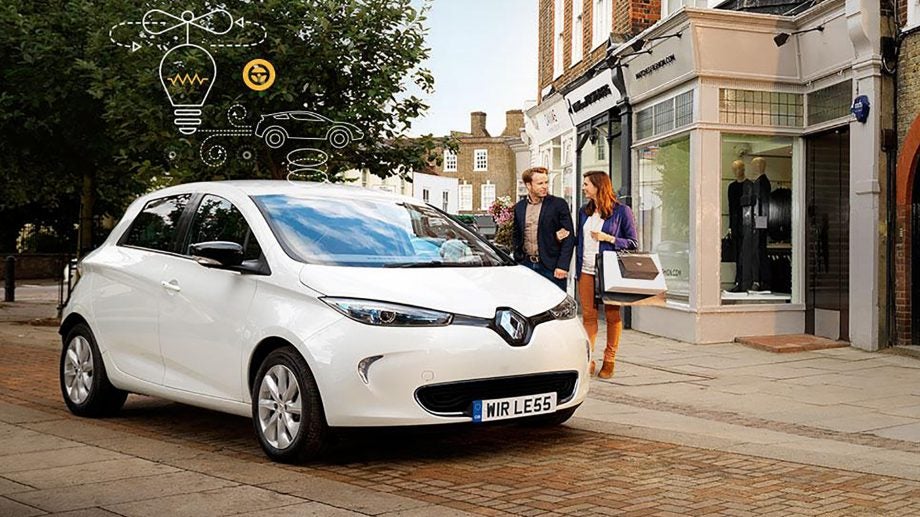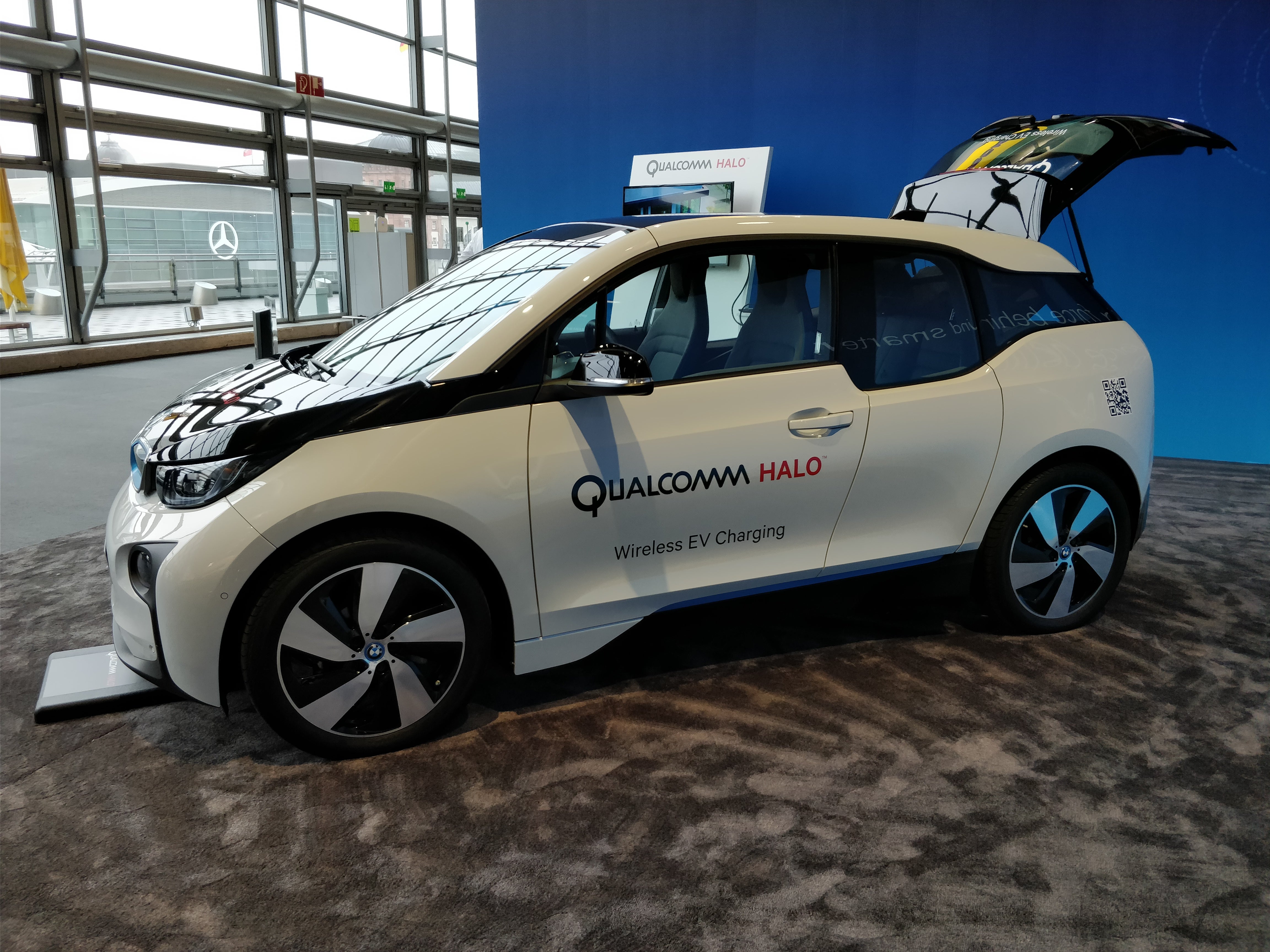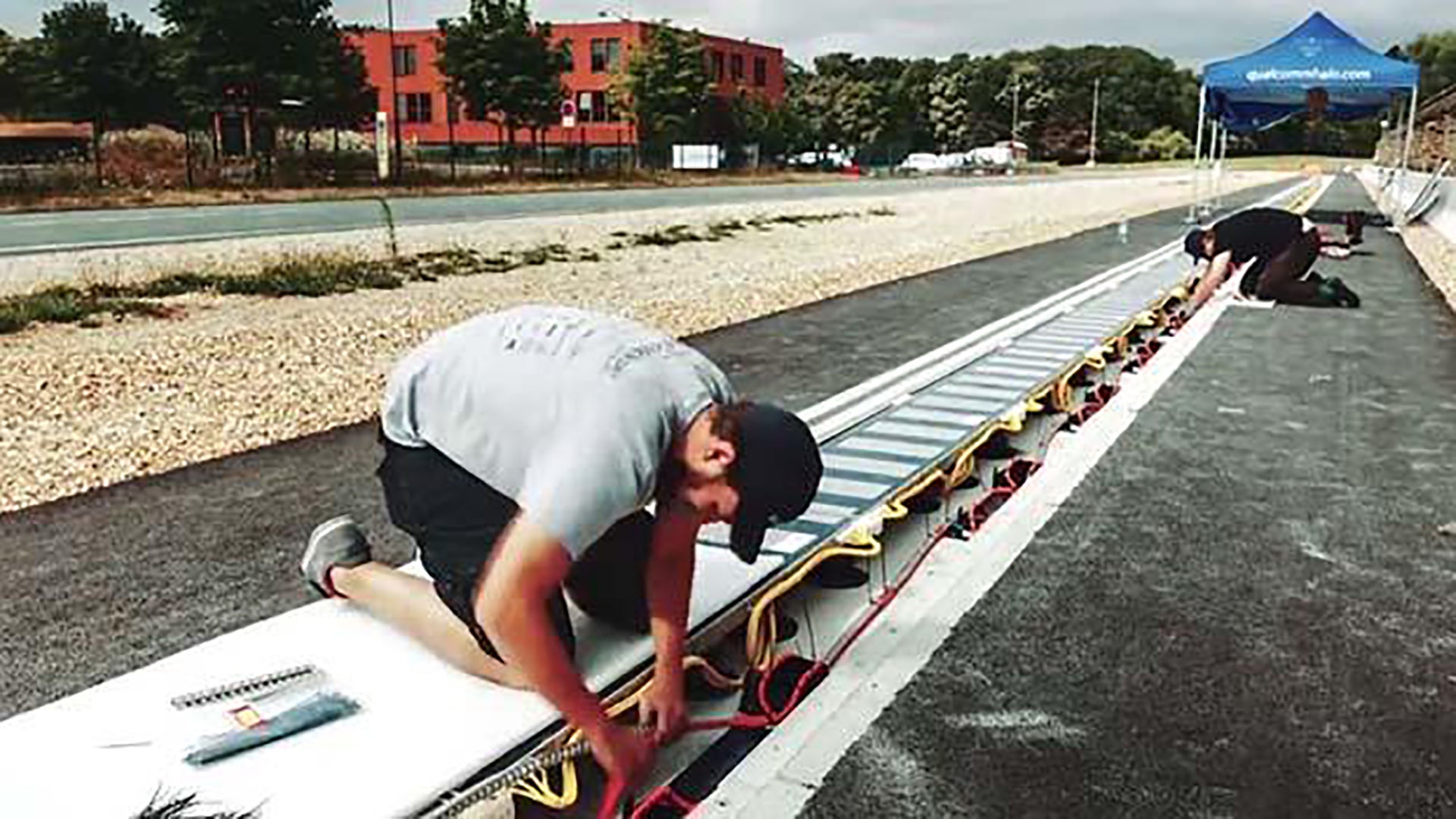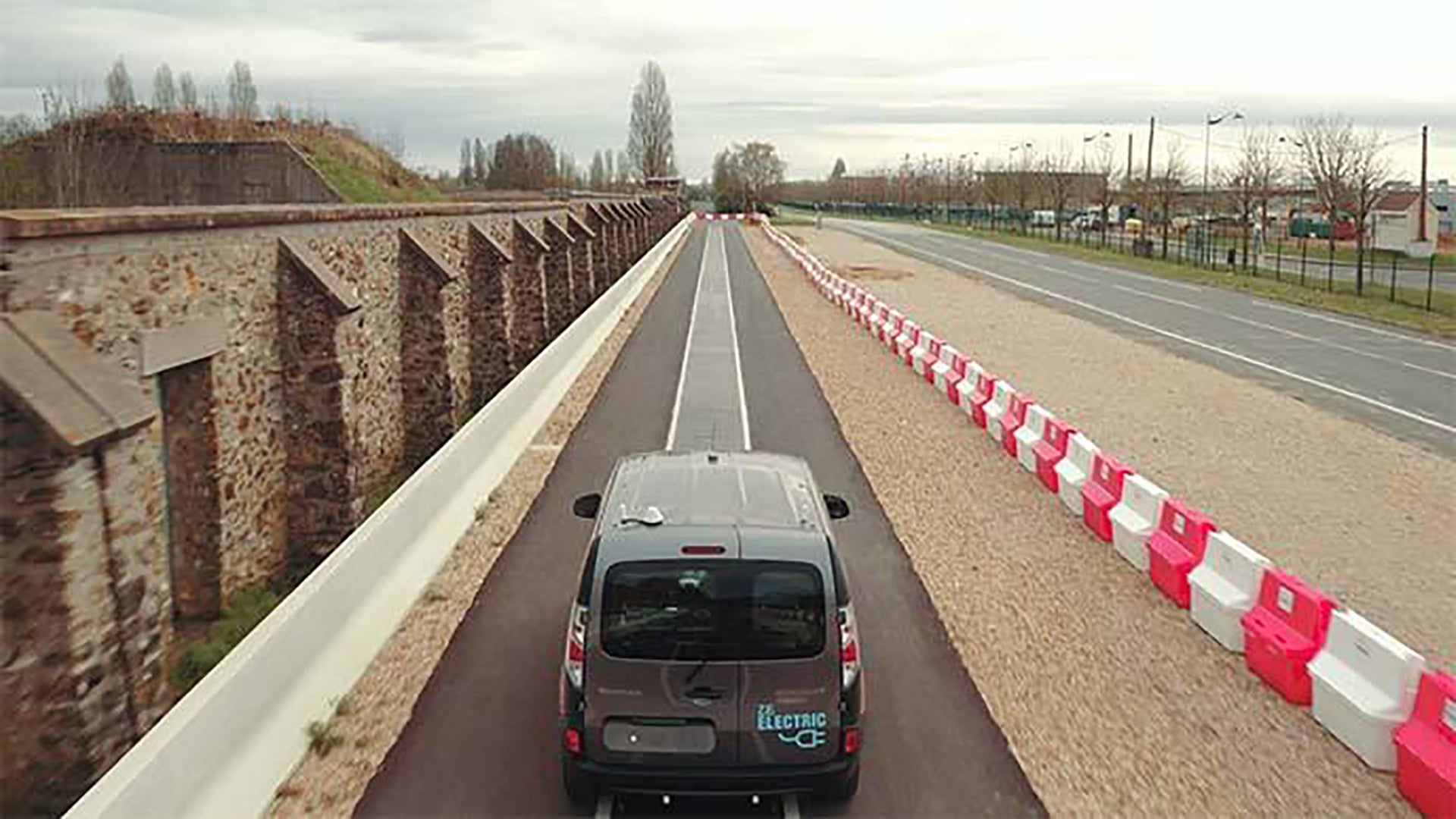Smart roads could charge your electric car as you drive by 2030

Qualcomm has shown off smart road technology that charges your car as you drive – and which could be available as soon as 2030.
US tech giant Qualcomm is best known for its chip technology; you’ll find its modems and processors in smartphones made by Apple, Samsung and more. But the company is also investing heavily in the car industry, and it’s splashing cash where it matters most: electric cars.
To highlight its commitment to the electric car revolution, Qualcomm used the Frankfurt’s IAA 2017 motor show to showcase DEVC – a unique method of charging electric cars while they drive.

Credit: Sean Keach / Trusted Reviews
It’s based on Qualcomm’s existing Qualcomm Halo Wireless Electric Vehicle Charging (WEVC) tech, which involves using a vehicle pad (installed on the underside of a car) and a base pad (installed on, or in, the floor) to wirelessly charge your vehicle.
But DEVC is a “dynamic” version of this system, and involves embedding a series of smart pads in a road to charge cars as they drive. Each pad uses “reflections” to work out whether a car is driving above. Dr Nicholas Keeling, a senior engineer at Qualcomm, tells us that this makes it possibly to efficiently provide power to electric vehicles, with pads only becoming truly active when they sense a vehicle.

Credit: Qualcomm
The technology was actually demonstrated publicly earlier this year, with dynamic charging successfully working at a 100-meter test track that was built by Qualcomm in partnership with Vedecom in Versailles, France. Qualcomm managed to provide power to two Renault Kangoo vehicles that were driving along the track – both of which had been fitted with Qualcomm’s wireless vehicle-charging pad, naturally.
Keeling tells Trusted Reviews that this technology is just in a concept phase for now, but that we could see such technology on actual roads within the next 10 to 15 years. He believes that we’ll first see semi-dynamic uses for in-road charging technology, with charging being provided at short-run locations – like a taxi rank, for instance.

Credit: Qualcomm
But the advantages are clear; Keeling says that the dynamic charging system is as efficient at getting power from the base pad to the vehicle pad as a standard, static charging system.
There’s a clear issue however, and that’s getting infrastructure bodies on board to provide such a system. Keeling tells us that although the actual system isn’t very expensive in terms of raw materials, the cost quickly rises due to the process of installing pads beneath the road surface.
It’s entirely possible, however, that road users could be charged to use charging roads, with a system similar to current toll roads, which could help justify the cost of building such a system and providing the necessary electricity.
Related: Range Rover Velar
What do you think of dynamic wireless car charging? Let us know via Facebook or Twitter.


